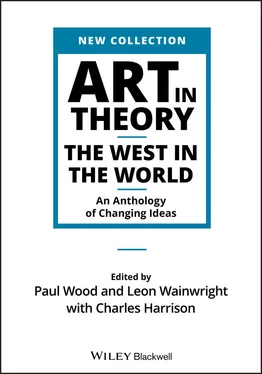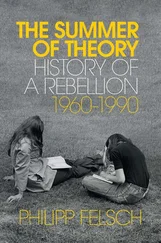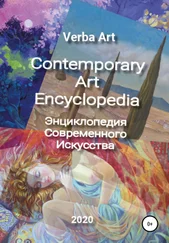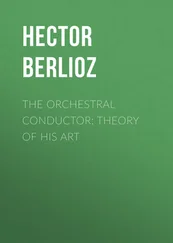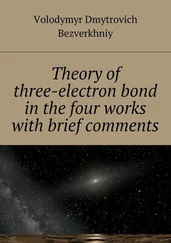IC16 Gottfried Wilhelm Leibniz (1646–1716) from ‘Preface’ to Novissima Sinica
Philosopher and mathematician, Leibniz invented the calculus at the same time, and independently of, Isaac Newton, and developed the binary number system of 0 and 1 which lies at the basis of the modern computer. Leibniz also shared the fascination of many other enquiring minds of his day with China. His writings are not, however, concerned with material culture, let alone with art, but with Chinese philosophy and religion. Leibniz was fascinated by the possibility that his binary numbering system echoed the yin and yang principles of ancient Chinese thought. He was also involved in the contentious debate over whether the Confucian philosophy was essentially secular, and could thus be retained by the Chinese were they to be converted to Christianity, or whether it amounted to a form of paganism and must therefore be renounced before the Chinese could become Christian. Influenced by Jesuit missionaries, who entered China via the Portuguese colonies of Goa and Macao and who constituted his main sources of information, Leibniz took the former position (in contrast to that of the more Spanish‐influenced Dominicans and Franciscans who tended to the latter). In 1697, and again in 1699, Leibniz published the Novissima Sinica (‘The Latest News from China’), a collection of writings by Jesuits active in the country. For this, he wrote a preface from which we include a short extract in the present anthology because in it Leibniz offers a striking sense of the esteem which many early modern European intellectuals felt for China, in sharp contrast to the subsequent negativity which came to mark views of ‘the Orient’ during the imperialist period of the nineteenth and twentieth centuries. Our source is Gottfried Wilhelm Leibniz: Writings on China , translated with an introduction, notes and commentaries by Daniel J. Cook and Henry Rosemont Jr, Chicago: Open Court Publishing Company, 1994; the extracts are from pp. 45–7 and 50–1. (An extract from Leibniz’s writing on art and beauty can be found in Art in Theory 1648–1815 , ID9, pp. 233–8.)
I consider it a singular plan of the fates that human cultivation and refinement should today be concentrated, as it were, in the two extremes of our continent, in Europe and in Tschina (as they call it), which adorns the Orient as Europe does the opposite edge of the earth. Perhaps Supreme Providence has ordained such an arrangement, so that as the most cultivated and distant peoples stretch out their arms to each other, those in between may gradually be brought to a better way of life….
Now the Chinese Empire, which challenges Europe in cultivated area and certainly surpasses her in population, vies with us in many other ways in almost equal combat, so that now they win, now we. But what should I put down first by way of comparison? To go over everything, even though useful, would be lengthy and is not our proper task in this place. In the useful arts and in practical experience with natural objects we are, all things considered, about equal to them, and each people has knowledge which it could with profit communicate to the other. In profundity of knowledge and in the theoretical disciplines we are their superiors. For besides logic and metaphysics, and the knowledge of things incorporeal, which we justly claim as peculiarly our province, we excel by far in the understanding of concepts which are abstracted by the mind from the material, i.e., in things mathematical, as is in truth demonstrated when Chinese astronomy comes into competition with our own. The Chinese are thus seen to be ignorant of that great light of the mind, the art of demonstration, and they have remained content with a sort of empirical geometry, which our artisans universally possess. They also yield to us in military science.
But who would have believed that there is on earth a people who, though we are in our view so very advanced in every branch of behavior, still surpass us in comprehending the precepts of civil life? Yet now we find this to be so among the Chinese, as we learn to know them better. And so if we are their equals in the industrial arts, and ahead of them in contemplative sciences, certainly they surpass us (though it is almost shameful to confess this) in practical philosophy, that is, in the precepts of ethics and politics adapted to the present life and use of mortals. Indeed, it is difficult to describe how beautifully all the laws of the Chinese, in contrast to those of other peoples, are directed to the achievement of public tranquility and the establishment of social order. […]
And now I learn that the Reverend Fathers Gerbillion and Bouvet, French Jesuits, along with four others, who are mathematicians from the Academie des Sciences, have been sent to the Orient to teach the monarch, not only the mathematical arts, but also the essence of our philosophy. But if this process should be continued I fear that we may soon become inferior to the Chinese in all branches of knowledge. I do not say this because I grudge them new light; rather I rejoice. But it is desirable that they in turn teach us those things which are especially in our interest: the greatest use of practical philosophy and a more perfect manner of living, to say nothing now of their other arts. Certainly the condition of our affairs, slipping as we are into ever greater corruption, seems to be such that we need missionaries from the Chinese who might teach us the use and practice of natural religion, just as we have sent them teachers of revealed theology. And so I believe that if someone expert, not in the beauty of goddesses but in the excellence of peoples, were selected as judge, the golden apple would be awarded to the Chinese unless we should win by virtue of one great but superhuman thing, namely, the divine gift of the Christian religion.
IC17 John Locke (1632–1704) ‘Of Property’, from Two Treatises of Government
Locke’s Two Treatises on Government were first published in the wake of the ‘Glorious Revolution’ in late 1689, though dated 1690. The text is now believed to have been composed earlier in the 1680s and thus to amount to a case for revolution against absolutism rather than a justification of it. In Section 49, at the end of Chapter 5 of the Second Treatise , Locke famously remarks that ‘in the beginning, all the World was America’. This comes at the end of a long argument in which he tries to establish that the institution of private property marks an advance over the holding of land in common. Looked at in one light, this is the founding statement of philosophical liberalism and the still‐widespread ideology of possessive individualism (which later came to stand inter alia as a model for the persona of the modernist artist). It is also one of the key moves by which is established the legitimacy of the plantation and colonization of the rest of the world by European nation states. A second important aspect of the argument is that it anticipates the ‘stadial’ theory of human social development of the eighteenth century. In the terms of this theory, human society is seen as having progressed through a series of stages (the ‘state of nature’/hunter‐gatherers, pastoralism, settled agriculture), finally emerging into then‐contemporary bourgeois commercial society (cf. IIC 8). In effect, the societies of Western Europe, England in particular, are held up as the model not just of technical, and soon‐to‐be industrial, progress but also of the cultural dimension of that progressive, liberal society: in a word, of civilization. We have used the text as published in John Locke: Two Treatises of Government , a critical edition by Peter Lazlett, rev. edn, Cambridge: Cambridge University Press 1963, pp. 328 [Section 26], 329–30 [Section 28], 331 [Section 30], 333 [Section 34], 336 [Section 37], 341 [Section 45], 343 [Sections 48 and 49].
Читать дальше
